Slowly Returning to Work and Still Working from Home
Unprecedented times call for unprecedented solutions. And today, employers and workers have an extraordinary opportunity to define the “next normal” in designing safer workplaces for those returning to the office while also enabling more efficient remote environments for those continuing to work from home.
Going Back to the Office
In our last email blast, we outlined best practices for back-to-work protocols in the Bay Area and beyond. Indeed, this is a time for companies to be innovative and roll out initiatives outside of their traditional comfort zones. But there will also be challenges as companies strive to maintain safety measures and contain costs:
- One example is the trend of technology companies that have provided free food services for staff but are now modifying, reducing, or eliminating all or parts of these programs. As a result, as workers realize that they may not be able to rely on corporate breakfast and lunch services at no charge, they will likely need to spend more for food. This will be an added financial pressure, especially for lower-level employees, and it begs the need to explore other alternatives such as food allowances.
- On the other hand, most companies are looking into new initiatives for retrofitting their space, investing in new technology, etc. With the stakes so high for physical and fiscal wellness, companies are advised to meet with workplace consultants to review options.
The transition back to the office is expected to be gradual and complicated as companies search for new protocols. Ironically, as part of this process, many employers are looking at the success of the work-at-home model—and are striving to mirror remote work experiences that have proved to be most effective in promoting productivity.
Remaining at Home
The percentage of remote workers had been rising for years before the coronavirus, as companies attempted to reduce their real estate footprint and cut costs. Then the pandemic hit, and nearly 90% of local corporations encouraged or required staff to work from home. Today, as some employees trickle back to the office, many are planning to stay put. According to a recent study in EmailAnalytics, 86% say they prefer to work from home, and 77% say they are more productive there.
Below, we outline the benefits and obstacles of virtual work and offer time-tested tips:
Benefits
- Productivity. Many studies confirm greater productivity in virtual environments, with one showing that at-home employees work more than three more weeks per year compared to their in-office counterparts. This is tied in part to having no daily commute. (A related stat: one in four employees quits their job due to their commute.)
- Saving time and money. By eliminating their commute, most employees save more than an hour a day as well as $4.5K per year in fuel costs.
- Environmental quality. Fewer vehicles on the road means less air pollution.
- Flexibility. Working in your PJs and having a flex schedule can be big pluses.
- Distractions. While this is double-edged (see below), non-business discussions and noise from co-workers are often unwelcome office distractions.
- Well-being. At-home workers report more time for exercise, less stress, and fewer sick days.
Obstacles
- Lack of clarity and accountability. If specific goals aren’t set and management direction is problematic, frustration is likely to result.
- Lack of in-office support. At home, you’ll need to assume the IT and admin roles.
- Separating home vs. office activities. This includes the difficulty of “unplugging” after a workday. (Note: An Airtasker study reveals that 29% polled struggle with a work/life balance.)
- Distractions. Tied to the above, having kids home from school as well as hyperactive pets (though they can also be therapeutic) is a common hurdle.
- Loneliness. The lack of human contact can definitely take its toll. No more water cooler!
- Collaborating. The lack of person-to-person interaction and brainstorming is also a concern. (Tied to this, countless organizations are re-evaluating the future of the open office.)
Tips
To maximize opportunities and minimize risks, we recommend the following:
- Office area. Set up a defined space separate from your living area.
- Routine/schedule. Try to replicate the discipline and professionalism of working in the office.
- Breaks. At the same time, be sure to plan for ongoing breaks to stretch and refresh. Change your scenery as needed.
- Communication. Along with email, it is essential to hear and see managers and associates. So take advantage of Zoom and other videoconferencing…and pick up the phone!
- Expectations. Review goals and timelines and avoid surprises.
- Meetings/check-in. Make sure you have daily and weekly checkpoints with supervisors and team members. Allow for assessments and adjustments.
- Fun. Plan for banter and even virtual happy hours to counter task monotony.
As we at a3 like to say, the best workplace solutions depend on finding the right balance and appreciating that one size doesn’t fit all. Indeed, there are many variables as we create the next-normal, including the type of work function as well as different personality types and demographics.
Whatever the future landscape ultimately looks like, both employers and workers will need to be adaptable and open to a new mindset, one in which communication, empathy, and honesty are paramount. With an attitude adjustment, creative thinking—and a little help from friends like workplace consultants—the work world of tomorrow will be a win-win situation whenever workers call home.
Be safe, be well, be smart,
Robin Weckesser, CEO, a3 Workplace Strategies
For more information, email Robin at rweckesser@a3workplace.com or visit www.a3workplacestrategies.com




Sorry, the comment form is closed at this time.